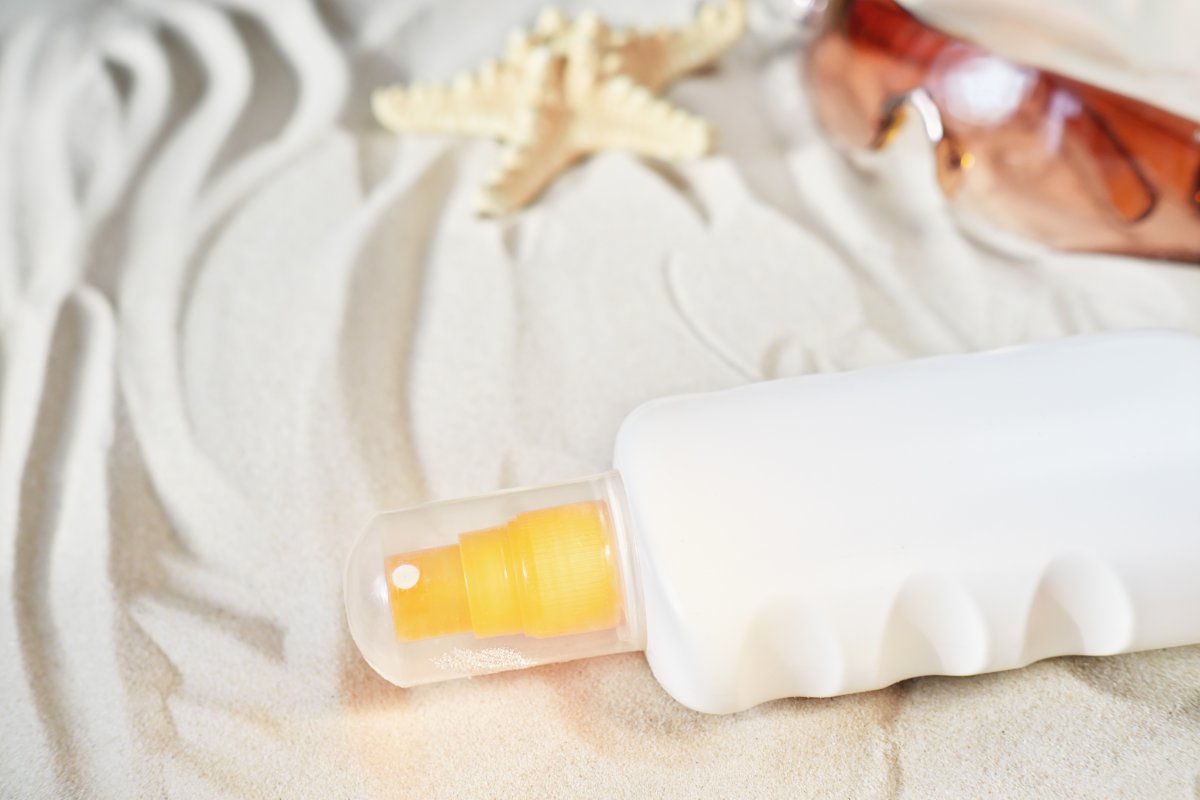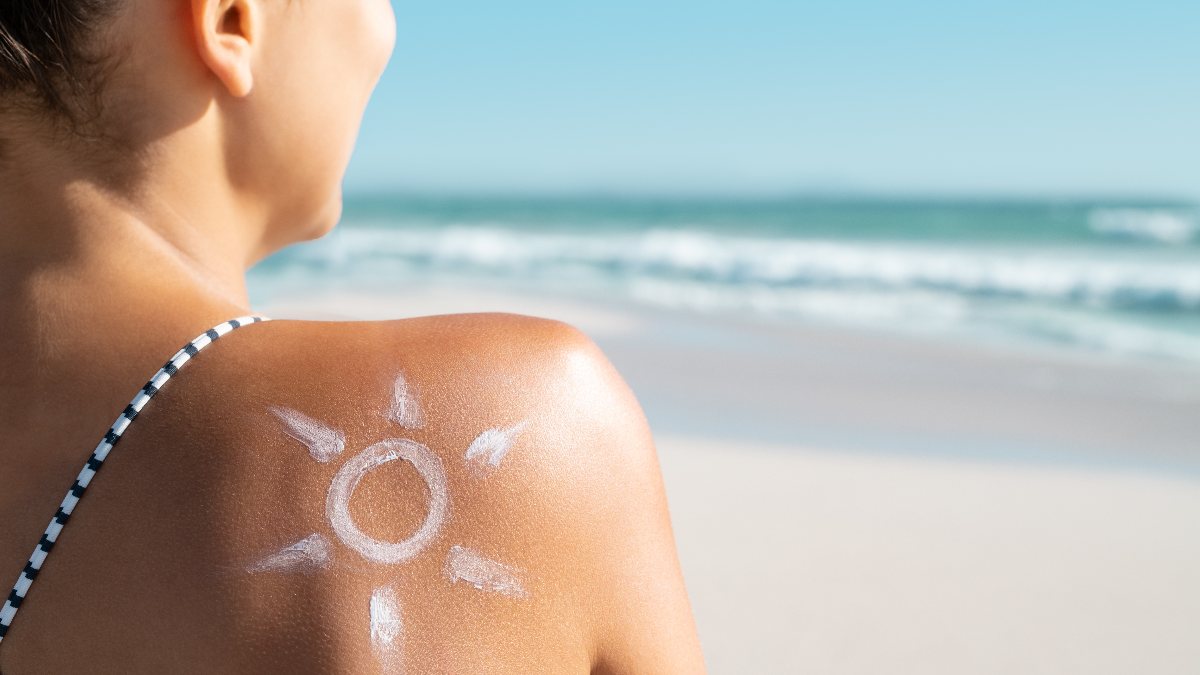UV rays from the sun are known to be harmful to the skin. So, what should be the best protection against it? Here are 10 false myths about sun protection.
Ultraviolet rays are invisible radiation emitted from the sun in the range of 100 to 400 nanometers (nm). A nanometer is one billionth of a metre. It has a shorter wavelength than visible light and contains more energy. Depending on the wavelength, it can pass through the ozone layer and has different health effects. The shorter the wavelength, the more harmful it is, but the less it penetrates the skin.
Three types of UVA, UVB and UVCIt has ultraviolet rays. UVA rays have a wavelength of 320 to 400 nm. Their energy is lower than UVB, but they penetrate the skin and are responsible for instant tanning, premature aging of the skin, and may play a role in the occurrence of some skin cancers. UVA rays are not easily absorbed by the ozone layer, about 95 percent of them manage to pass through the ozone layer.
UVB rays have a wavelength of 280 to 320 nm. They only penetrate the protective layer of the skin. They are responsible for long-term tanning and sunburn, and most skin cancers. Most of the UVB is absorbed by the ozone layer, with only 5 percent reaching the earth’s surface.
UVC has a wavelength of 100 to 280 nm and is the UV rays with the most energy. Even at very low doses they are very dangerous. On the other hand, they do not cross the ozone layer and never reach the earth. They can be created artificially to kill bacteria.

Factors affecting the intensity of ultraviolet rays
The level and intensity of UV rays reaching the earth’s surface vary depending on many factors.
The time of day is important. UV rays from the sun reach their peak at noon. The angle of inclination of the sun changes with the seasons, which affects the intensity of the rays reaching the ground. The rays are of maximum intensity in the spring and summer, but they can also be intense in the winter, especially when a large snow surface can reflect UV rays.
The decrease in the thickness of the ozone layer increases the intensity of UV rays. This effect is more pronounced in the spring and is linked to greenhouse gas emissions. Cloud cover can also greatly affect the amount of UV rays reaching the ground. Dark, rain-laden clouds can absorb up to 80 percent of the radiation. However, UV is less absorbed by light clouds at high altitude. Scattered clouds can increase the amount of UV on the ground due to the reflection phenomenon. UV intensity also depends on atmospheric pressure, which affects weather conditions. If the pressure is high, the ozone layer is thinner, and if the pressure is low, the ozone layer is thicker.
Freshly fallen and undisturbed snow can reflect up to 85 percent of UV rays. like sand, concrete and water other surfaces have less reflective potential.
UV rays increase as you rise above sea level because the atmosphere is thinner and absorbs less UV. The UV value measured at the top of a mountain will be higher than the UV value measured in the city. At an altitude of 2,000 meters, the UV value is 30 percent higher than that measured at sea level.

10 misconceptions about sun protection
UV rays accelerate skin aging and increase the risk of skin cancer. This is now widely accepted knowledge. However, some believed information about sun protection is quite misleading. How much sunscreen should be applied? Is it better to give preference to chemical creams? Here are some misconceptions about sun protection.
Myth #1: Some sunscreens provide all-day protection
Each skin has its own protective value against UV rays. The more sensitive the skin, the more limited the time of sun protection. Sunscreens replicate this natural protection with the index indicated on the packaging. For example, a very fair-skinned person has about 10 minutes of natural protection. If she uses a sunscreen of SPF 30, she can stay in the sun for about 300 minutes. But practically no one stays in the sun that long. However, many people underestimate the sensitivity of their skin type, but protection by skin type is very important. Apart from these, sweating also reduces the protection time.
Myth 2: Reapplying cream prolongs protection
Many sun lovers believe that by applying the cream a second time, protection starts again. This is wrong. Regardless of skin type, the stated protection is valid only once a day. However, it is necessary to apply the cream regularly to ensure good protection.
Myth 3: No sunscreen is truly waterproof
A flawless cream would be great but in practice this is not the case. So-called waterproof creams provide protection at least 50 percent of the specified index after going under water. Therefore, they should be applied regularly after bathing and after swimming in the sea or pool to maintain protection.
Myth 4: The thicker the cream layer, the better
This is partially true because most people don’t use enough sunscreen. However, we should not be stingy on this issue. If the sunscreen layer is too thin, you can significantly reduce the protection. It is recommended to apply two consecutive sunscreen applications, preferably 15 minutes apart. Thus, you protect the areas of the body that did not receive (enough) cream in the first application.
Myth 5: Sunscreens don’t immediately protect the skin
False. However, before going out in the sun and sweating, the sunscreen should be allowed to dry on your skin. The cream is stronger and more effective when it adheres better to the skin. Ideally, it is to be applied about 30 minutes before going out in the sun.
Myth 6: The sun does not trigger dangerous moles
Some moles are genetic and some develop throughout life and favor sunbathing formations. Moles are normally harmless, but in some cases they can cause skin cancer. One in five cases of melanoma develops from an existing mole. If you have more than 100 pigment spots on your body, you are in the risk group. For this reason, you should protect yourself from the sun and have your skin checked regularly.
Myth 7: The same sun protection rules apply to exercisers
You sweat when you exercise. Contact with sweat drops or water significantly reduces sun protection. In addition to repetition and frequent application of the cream, it is necessary to use a high index cream. If you’re in the sun all day, you should wear long pants, long sleeves, and a hat. UV rays are more intense in the mountains. It increases by about 10 percent for every 1000 meters of altitude. Water sports also increase risks because water reflects UV rays, amplifying their effects. In case of long stay in water, it is recommended to wear anti-UV clothing. Also, the best time to exercise is until 10:00 in the morning.
Myth 8: Insect protectors should be applied before sunscreen
It’s best to apply sunscreen, let it penetrate for about thirty minutes, then use insecticide sprays. Because sunscreen penetrates the skin well, water-soluble insect and insect repellants only settle on the surface of the skin. For this reason, a mosquito repellent usually works for a little less time than a sunscreen and its application needs to be renewed more quickly.
Myth 9: Strong sunlight does not trigger herpes
Many times we forget to protect the lips. However, unlike other parts of the body, the lips are particularly sensitive to UV rays. UV rays not only trigger herpes, but also accelerate the aging of the skin around the lips. The lips lose volume and fine lines may form in the corners of the mouth. In addition, the lips can also develop skin cancer.
Myth 10: Creams with physical protection are better than chemicals
Chemical and physical protection creams protect the skin from UV rays. Chemical filters absorb UV rays and convert them into heat. Physical filters reflect them. Chemical filters have the advantage of providing a very high degree of protection that cannot be achieved with physical filters. Chemical filter sunscreens penetrate the skin better. Physical filters are much more environmentally friendly. It is better tolerated by the skin, especially recommended for infants and young children. On the other hand, they are more difficult to spread to the skin. The choice of chemical or physical cream therefore depends on your preferences. Many manufacturers combine the two filters.
–

